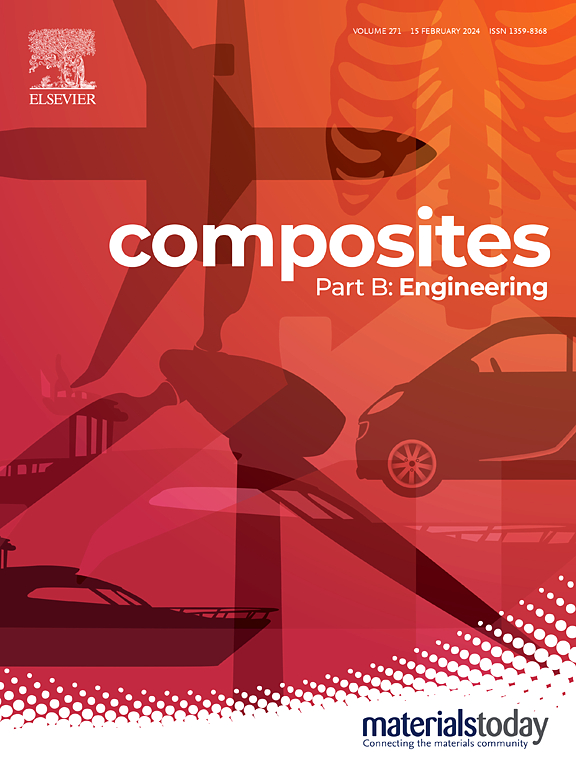Computational modeling of low-velocity impact response in long discontinuous fiber composite with statistical validation
IF 12.7
1区 材料科学
Q1 ENGINEERING, MULTIDISCIPLINARY
引用次数: 0
Abstract
This study investigates the low-velocity impact (LVI) response of prepreg platelet molded composites (PPMC) with a stochastic meso-structure using finite element analysis (FEA) and an innovative approach for statistical validation. A finite element model was developed to simulate the dynamic response and progressive damage mechanisms in PPMC plates, incorporating meso-scale variability arising from random platelet orientation and arrangement. Functional analysis of variance (fANOVA) was employed as a novel method for statistically validating stochastic FEA results by comparing simulated and experimental responses. High-resolution imaging via X-ray computed tomography (μCT) and ultrasonic testing (UT) provided further validation by characterizing the spatial distribution and morphology of damage, including intra-platelet failure and inter-platelet delamination. The findings highlight the dominant role of inter-platelet delamination in energy dissipation and provide quantitative insights into the damage evolution process. This work provides a validated framework for modeling and analyzing PPMC impact behavior, offering insights for the design and optimization of discontinuous fiber composite systems.
长不连续纤维复合材料低速冲击响应的计算模型及统计验证
本研究采用有限元分析(FEA)和一种创新的统计验证方法,研究了具有随机细观结构的预浸液血小板模塑复合材料(PPMC)的低速冲击(LVI)响应。建立了一个有限元模型来模拟PPMC板的动态响应和渐进损伤机制,其中考虑了随机血小板方向和排列引起的中观尺度变化。方差函数分析(fANOVA)是一种新颖的方法,通过比较模拟响应和实验响应来统计验证随机有限元分析结果。通过x射线计算机断层扫描(μCT)和超声检测(UT)的高分辨率成像,通过表征损伤的空间分布和形态,包括血小板内衰竭和血小板间分层,提供了进一步的验证。这些发现强调了血小板间分层在能量耗散中的主导作用,并为损伤演化过程提供了定量的见解。这项工作为建模和分析PPMC冲击行为提供了一个经过验证的框架,为不连续纤维复合材料系统的设计和优化提供了见解。
本文章由计算机程序翻译,如有差异,请以英文原文为准。
求助全文
约1分钟内获得全文
求助全文
来源期刊

Composites Part B: Engineering
工程技术-材料科学:复合
CiteScore
24.40
自引率
11.50%
发文量
784
审稿时长
21 days
期刊介绍:
Composites Part B: Engineering is a journal that publishes impactful research of high quality on composite materials. This research is supported by fundamental mechanics and materials science and engineering approaches. The targeted research can cover a wide range of length scales, ranging from nano to micro and meso, and even to the full product and structure level. The journal specifically focuses on engineering applications that involve high performance composites. These applications can range from low volume and high cost to high volume and low cost composite development.
The main goal of the journal is to provide a platform for the prompt publication of original and high quality research. The emphasis is on design, development, modeling, validation, and manufacturing of engineering details and concepts. The journal welcomes both basic research papers and proposals for review articles. Authors are encouraged to address challenges across various application areas. These areas include, but are not limited to, aerospace, automotive, and other surface transportation. The journal also covers energy-related applications, with a focus on renewable energy. Other application areas include infrastructure, off-shore and maritime projects, health care technology, and recreational products.
 求助内容:
求助内容: 应助结果提醒方式:
应助结果提醒方式:


